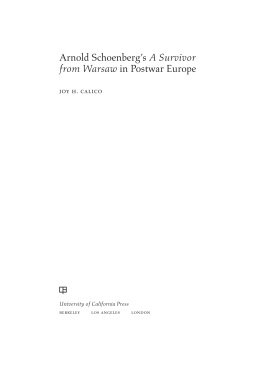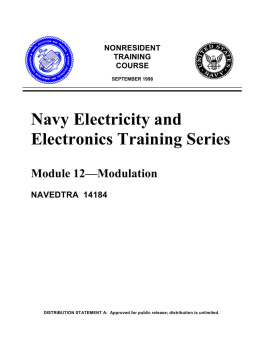Modulation
MAX REGER
DOVER PUBLICATIONS, INC.
Mineola, New York
Bibliographical Note
This Dover edition, first published in 2007, is an unabridged republication of the work originally published as On the Theory of Modulation (Beitrge zur Modulationslehre, translated by John Bemhoff) by C. F. Kahnt Nachfolger, Leipzig, in 1904. The musical examples have been newly engraved for this edition.
Library of Congress Cataloging-in-Publication Data
Reger, Max, 18731916.
[Beitrge zur Modulationslehre. English]
Modulation / Max Reger; translated by John Bemhoff.
p. cm.
ISBN-13: 978-0-486-46732-1
ISBN-10: 0-486-45732-X
1. Modulation (Music) I. Bemhoff, John. II. Title.
MT52.R3313 2007
781.2'58dc22
2007004094
Manufactured in the United States by Courier Corporation
45732X03
www.doverpublications.com
Contents
Preliminary Remarks
T his Supplement to the theory of Modulation is intended both for the professional musician (for those learning harmony, for pianists, organists, singers and others), and for the amateur to whom the rudiments of the theory of music are not a sealed book.
I would draw special attention to the fact that in this Supplement to the theory of Modulation, i.e. in the examples of modulation, I have purposely avoided anything pertaining to enharmonies, with a view of drawing the student's special attention to musical logic; for the same reason, I have given almost all the examples of modulation by translating tonic, sub- and super-dominant into the new tonic, sub- or super-dominant, as the case may be, i.e. I have given them in so-called cadence-like form, in order to thus lay before the pupil the fundamental principle of modulation in the clearest possible manner; the analyses of the examples of modulation will at once make the fundamental principles clear to any student, even to less gifted ones! Of course, all the examples of modulation will allow of other solutions; but I doubt whether such other solutions will always be shorteri.e. more to the point and more logical than those given in this Supplement.
The musician, studying the examples of modulation with their analyses, under the guidance of an experienced teacher with a mind open to improvement or progress, should transpose the examples into as many keys as possible, and should himself try to invent similar modulations, and even perhaps analyze his own examples of modulation in the manner of analysis adopted by me, whereby the understanding of the principles of modulation briefly developed in this Supplement will certainly be facilitated for him, and he will gain a considerable amount of additional insight into the subject and absolute clearness in grasping and understanding even the most complicated modulation, harmony, and counterpoint.
In conclusion, I would request that my examples of modulation be looked upon not as compositions, but that they be merely taken for what they are intendeddry examples explaining the simplest principles of the theory of modulation, one of the most important chapters in the whole of musical theoryespecially considering the modem style of composition.
Should my little book be destined to assist in clearing up the difficulties of so manifold and varied a nature which students encounter in dealing with this special subject, the chief object of my efforts will have been attained.
Munich, October 1903
MAX REGER
Modulation
Analysis of the Examples in Modulation
A. From C-major to:

1) G-major
Tonic C-major; use this C-major which is at the same time the sub-dominant of G-major. (Cadence!)

2) D-major
Tonic C-major; relative (e-minor) to the dominant (G-major) of C-major; use this e-minor (1st inversion), which is also relative to the sub-dominant (G-major) of D-major. (Cadence!)


3) A-major
Tonie C-major; relative (d-minor) to the sub-dominant (F-major) of C-major; use this d-minor, which is at the same time the minor sub-dominant of A-major. (Cadence!)

4) E-major
Tonic C-major; relative (a-minor) to the tonic of C-major; use this a-minor, which is at the same time the minor sub-dominant of E-major. (Cadence!)


5) B-major
Tonic C-major; relative (e-minor) to the dominant (G-major) of C-major; use this e-minor, which is also the minor sub-dominant in B-major. (Cadence!)

6) F-major
Tonic C-major; dominant G-major; the 1st inversion of which is used (the chord of the sixth, b d g), which is at the same time the chord of the Neapolitan sixth) in F-major. (Cadence!)


7) C-major
Tonic C-major; relative (e-minor) to the dominant (G-major) of C-major; use this e-minor, which is also the minor sub-dominant of B-major; dominant (F-major) of B-major; use this F-major, which is at the same time sub-dominant in C-major. (Cadence!)

8) G-major
Tonic C-major; relative (d-minor) to the sub-dominant (F-major) of C-major; dominant (A-major) of d-minor; use the 1st inversion of this A-major (the chord of the sixth, c e a), which is also the chord of the Neapolitan sixth in G-major. (Cadence!)
























